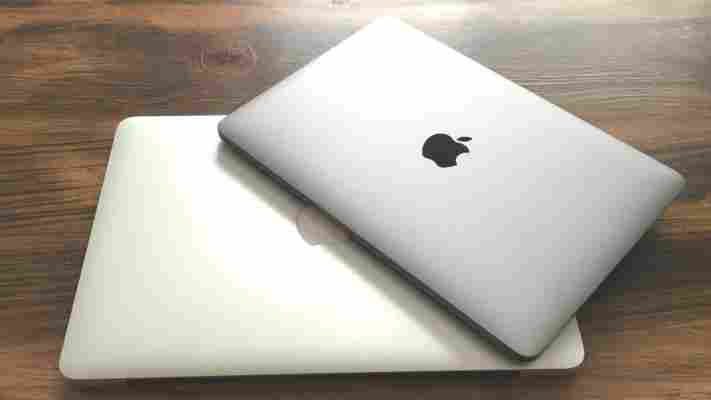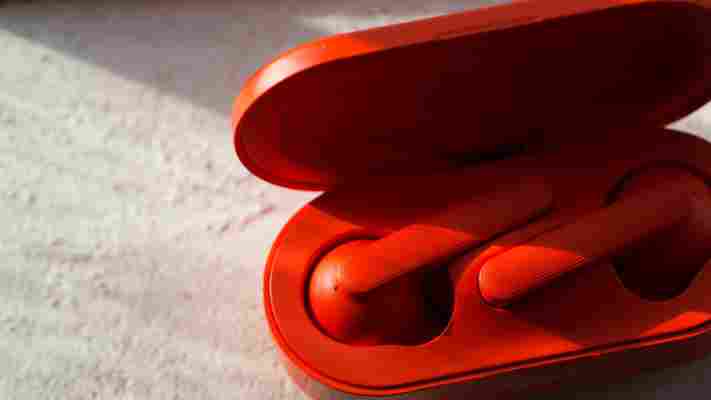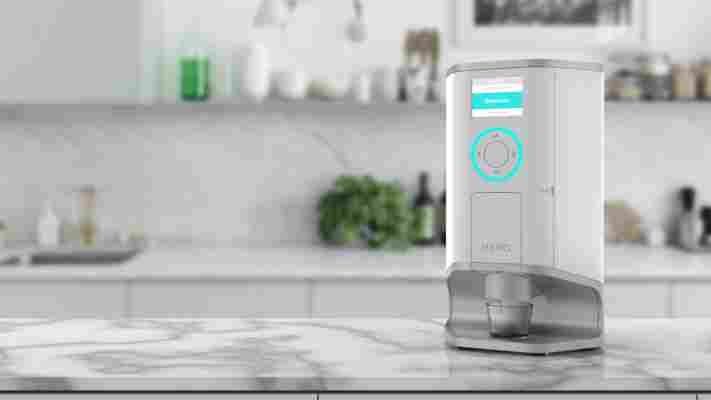The 2016 MacBook Pro: what we hear (probably) isn’t what we’ll get
As with an pre-release Apple hardware, rumors of the 2016 MacBook Pro are making their way through the news cycle. If you believe them all, we’ll be getting the computer of our dreams in a slim, light package about the size of a MacBook Air.

But I don’t believe everything I read, and neither should you.
Taking all the rumors into account, the 2016 MacBook Pro will be completely redesigned and pack in just about every feature you can think of.
Touch ID? Yup, that’s been tossed around. Some claim Apple is trying to squeeze dedicated Touch ID hardware into its new computer, possibly near the top of the device.
The overall dimensions of the case are also said to be slimmer. We’ve heard several times that the MacBook Air is serving as a type of reference device for the new Pro.
Elsewhere, USB-C is going to be the silver bullet for connectivity moving forward. Apple is believed to be including up to three USB C ports on the new MacBook Pro; the MacBook has but one.
There’s also talk that the new MacBook Pro will have a Lightning port. Apple’s reasoning for that may be headphones; it’s believed to be dropping the audio jack from the iPhone 7, so it makes little sense to have it on the MacBook Pro.
The new Pro is also said to come in the color-ways of the MacBook: Space Grey, Gold, Rose Gold and Silver.
Kaby Lake processors are also likely to be inside . Intel has confirmed it’s now shipping them to OEMs like Apple.
We’re not sure which GPU the MacBook Pro may carry, but rumors point to both Intel and NVIDIA as contenders, here.
LTE is also being tossed around. A recently discovered Apple patent details methods for packing antenna into the hinge of a computer, which could be for better Wi-Fi as well as LTE connectivity.
And the OLED bar above the keyboard? That’s supposed to be some sort of rotating command center.
Let’s be reasonable for a second (I know, who wants to be reasonable about rumors for a device so many of us want, right?). Some of this is entirely possible — and probable — but some is utter nonsense.
Straight away, I’ll tell you the OLED bar is almost definitely not happening. I’ve spoken to several people ‘familiar with Apple’s plans’ (which is the popular ‘journalist’ term for ‘I have sources but I’m not telling you who they are’) who laugh that feature off.
Speculatively, I think Apple would rather keep it simple; the technical and hardware debt incurred with an OLED bar is through the roof , and repairs on the new MacBook Pro likely won’t come cheap or easy.
A Lightning port on a MacBook is a silly idea. To my mind, it’s a step backwards; Bluetooth headphones are easy to come by, and very reliable. Adding a Lightning port also confuses data transfer methods (a Lightning-to-Lightning cable for your iPhone? Stupid.), and having one simply for headphones is a waste of space.
To that, the 2016 MacBook Pro will probably be a bit thicker than the Air, and definitely nowhere as slim as the MacBook is. The Pro doesn’t have the luxury of a unified chipset design, and needs to be a lot more powerful than the MacBook. That means it needs to have more upgrade options, which in turn leaves us cobbling off-the-shelf parts together, more or less.
LTE is a stretch, too. The antenna patent may not make it into the 2016 Pro, but I doubt Apple is looking to make a connected MacBook. It has gone all-in on tethering to an iPhone, and leaving us with connected MacBooks fragments Apple’s ‘please buy every Apple device’ missive.
Touch ID is also something we should probably forget about. Apple recently created a way to authenticate a MacBook log-in via the Apple Watch (please see the ‘buy every device’ line above), which can also be used for Apple Pay transactions on the Web. Using a second device has a lot more avenues than Touch ID for authentication, and keeps us tied to Apple’s ecosystems.
We know that nobody outside of Apple knows anything. Rumors are not facts, and while exciting — they’re often nonsense or wishful thinking.
Consider that Apple has failed to produce a significant upgrade to the MacBook Pro in some time. The last time we saw anything impressive ( 2013 !), it was a 13-inch device with a Retina screen. Later, we saw Force Touch trackpads .
It’s being pragmatic; do you really think Apple will suddenly jump the shark and offer up Lighting connectivity, Touch ID and LTE?
I don’t. The 2016 MacBook Pro will undoubtedly be a very new and exciting device, but it will build on Apple’s history with the Pro — not alter course for the sake of doing so.
Look for a slimmer design with Apple’s new butterfly keyboard mechanism, four USB C ports and a Force Touch trackpad. It will almost definitely have Kaby Lake processors (Apple skipped Skylake for a reason, right?), a few GPU options (with Intel being standard), and SSD memory (but not a lot for the base model, because iCloud is where it’s at).
You’ll almost definitely be able to buy it in several different colors, and it will be more portable than the existing Pro. Apple should also keep the 13 and 15-inch screen sizes, but may increase Retina to 4K on both. Also, I’d be shocked if its P3 color gamut wasn’t involved with those new displays.
There should also be some new peripherals direct from Apple. If it wants to make the jump to USB C, we’ll need a solid hub to connect existing peripherals to. Also, cases and other non-essential items should be on offer at launch.
The 2016 MAcBook Pro will be better than what you can buy now — a lot better. It just won’t be a unicorn.
Mobvoi’s AirPods-style wireless earbuds promise comparable features for less
After entering the smart gadgets market with Wear OS -based watches and a Google Assistant-powered speaker , Beijing-based hardware brand Mobvoi is now working on its next product: its TicPods Free wireless earbuds.

With their extended batons, these resemble Apple’s AirPods to some degree, and aim to match up to their feature set with a smaller price tag. They’re currently drumming up interest on Indiegogo, and have already surpassed their funding goal by a wide margin.
These Bluetooth 4.2-based buds support gestures so you can control playback and phone calls by swiping and tapping on the exterior; they also detect when they’re in your ear or have popped out, and pause your tunes accordingly.
The TicPods Free are also water-resistant enough to survive a downpour and sweaty workouts at the gym, and charge up in 15 minutes to deliver 85 minutes of playback time. The buds last up to four hours on a full charge, and the included charging case can power them for up to 18 hours when it’s fully juiced up.
Mobvoi promises to ship these starting in July, at a retail price of $129 in your choice of red, blue, or white. That’s $30 cheaper than the AirPods – but it also means a lower charging capacity than the AirPods’ case, which manages to keep Apple’s buds going for 24 hours instead of the TicPods Free’s 18 hours.
There are also other alternatives to consider in the true wireless space, including Zolo’s Liberty , the $150 Erato Verse and my favorite from last year, LG’s excellent Tone Free (which are now on sale at $108 on Amazon ).
Still, if these sound decent and look half as good in reality as in pictures, they could rival Apple’s offering later this year. Mobvoi is trying to get more customers on board with discounted pricing on Indiegogo – if you choose to back their campaign now, you can get a pair of TicPods Free for $79 (exclusive of shipping).
As with all crowdfunded gear, it’s important to note that not all campaigns see their products ship as promised , even if they meet their funding goals. That being said, Mobvoi has delivered with its previous devices, and we even liked their watch and speaker when we tried them. For what it’s worth, the company’s been around since 2012, is backed by Sequoia, and was founded by an ex-Googler.
Check out the TicPods Free Indiegogo campaign on this page .
The Next Web’s 2018 conference is just a few weeks away, and it’ll be
This nifty device takes the hassle out of remembering your meds
When it comes to smart devices making our lives easier in the home, it’s not difficult to find countless thermostats , lights , coffee machines and even robots .

So it surprised me when New York-based startup HERO announced its latest creation – a smart pill dispenser – that I couldn’t think of anything similar.
The HERO device looks a lot like a coffee machine but it’s designed to take the stress out of remembering to take medication. You can load in up to ten different types of pills and program it to know when you need take each one and what your dosage should be.
Its connected app will then send you an alert when it’s time for you, or someone else in your family, to take the medicine and automatically dispense the right one.
While it might sound like a simple idea, trying to remember to take various medications isn’t always straightforward. For parents and caregivers, the app will also alert you if someone else in the family has missed a scheduled dosage.
It’s definitely useful for people who take medication regularly, like the contraceptive pill or for diabetes, but it can also be used to house painkillers or any medication you might not be taking daily and it will dispense these on-demand. It shows you a count on how many have been taken and whether your supply is running low.
The device is available to pre-order now for $399, but it will set you back a hefty $999 in the summer when it goes on sale in stores.
➤ HERO
